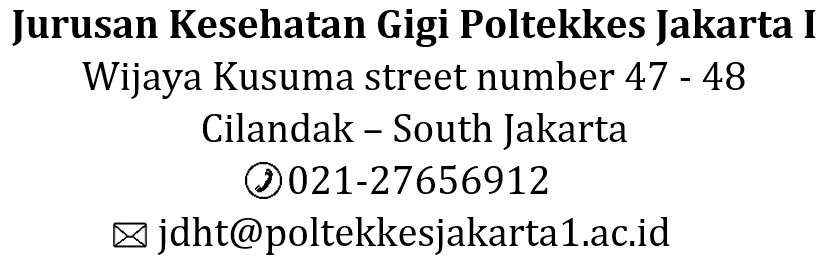ORAL DETECT-TRI TO IMPROVE DENTAL AND ORAL DISEASES DETECTION BEHAVIOUR IN HOUSWIVES
Keywords:
Knowledge, Attitude, Behaviour, Dental and Oral Disease DetectionAbstract
Background Riskesdas 2018 state that the largest proportion of dental problems in Indonesia are damaged/cavities/sick teeth (45.3%). Dental and oral health problems in Gowa Regency, South Sulawesi Province 75.08%, age group 35-44 years 72.86% with DMF-T index higher in women (69.43%) than men (30.57%) ). Community understanding of dental and oral diseases is still low, including housewives with high level of knowledge (9.10%), medium (43.63%), low (47.27%). This can be overcome with a system to detect dental and oral disease so that it is not more severe and early treatment before going to dentist. Objective prove the feasibility test and effectiveness of "Oral Detect-Tri" application in increasing behavior of detecting dental and oral diseases in housewives. Method used Research and Development with Quasy experimental research, Pretest-Posttest group design. Subjects in this study were housewives in Paccinongang Village, Gowa Regency, intervention group and housewives at the Posyandu Health Center Tamangapa for the control group; Intervention 30 people were given the "Oral Detect-Tri" Application and Control 30 people were given counseling by cadres. Data collection techniques in this study were interviews, questionnaires and observation. Data tested using pearson correlation test for validation test then Wilcoxon and Mann-Whitney for effectiveness test. Results of the application "Oral Detect-Tri" are feasible as a media for dental health education with expert validation results of 80% and a p-value of 0.002, and the results of the delta test stated that its application was effective in increasing intervention knowledge (3.83) control (0.166), intervention attitude (9.7) control (0.3), intervention measures (3.2) control (0.23) Conclusion Application of “Oral Detect-Tri” application is feasible and effective in changing the behavior of housewives in detecting dental and oral diseases.Downloads
Download data is not yet available.
Published
2023-10-19
How to Cite
Ramdhani, A., Fatmasari, D. ., & Djamil, M. . (2023). ORAL DETECT-TRI TO IMPROVE DENTAL AND ORAL DISEASES DETECTION BEHAVIOUR IN HOUSWIVES. JDHT Journal of Dental Hygiene and Therapy, 4(2), 132–139. https://doi.org/10.36082/jdht.v4i2.1276
Issue
Section
Articles
Copyright & Licensing
Copyright (c) 2023 Astri Ramdhani

This work is licensed under a Creative Commons Attribution-ShareAlike 4.0 International License.
















